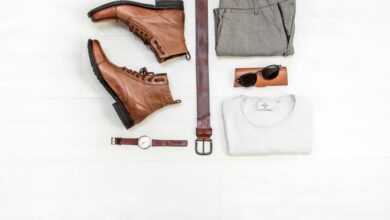
What Your Clothes Might Be Saying About You – Good or Bad?
Whether you’re into fashion or not, the way you dress is saying something about you — even when you’re not trying. Your clothes are often the first thing people notice, and they’re silently forming opinions before you’ve even opened your mouth. So, what’s your wardrobe actually saying? And how do you take back control of the message?
Why Style Sends a Message (Even If You’re Not Aware of It)
You might think you dress purely for comfort, or that your look is “just you” — but fashion is never just functional. Psychologists have found that we make split-second judgements based on appearance. That means your clothes can shape how others see you: confident or insecure, sharp or scruffy, organised or chaotic.
It’s not just others, either. What you wear can impact how you feel. Known as “enclothed cognition”, studies show that wearing certain styles can actually shift your mindset. Smart clothes, for instance, have been linked to sharper focus and greater self-assurance.
Common Clothing Messages (and What They Reveal)
| Clothing Choice | What It Might Say | How It’s Perceived |
|---|---|---|
| Well-fitted blazer | Detail-oriented, confident, switched on | Smart, reliable, polished |
| Worn-out trainers | Low effort, possibly careless | Casual, but maybe lazy or disengaged |
| Bold prints or colours | Creative, expressive, extroverted | Fun, attention-seeking, individualistic |
| Monochrome outfits | Minimalist, practical, focused | Stylish, serious, low-key cool |
| Graphic slogan tees | Playful or opinionated | Memorable, sometimes divisive |
| Ill-fitting jeans | Unaware or indifferent to fit | Sloppy, lacking self-awareness |
Subtle Style Signals You Might Be Overlooking
- Fit over fashion: A perfectly fitting tee and jeans combo will always beat designer labels worn badly.
- Condition counts: Faded, bobbled, or stained clothing suggests you don’t value your appearance.
- Footwear tells all: Studies show people notice your shoes more than you’d think — make them count.
- Grooming and accessories: From clean nails to a quality watch, the finishing touches often complete the message.
How to Make Your Clothes Work for You, Not Against You
If you’re not dressing with intention, you’re leaving your personal brand up to chance. Here’s how to take charge of what your clothes are saying:
1. Audit Your Wardrobe
Go through what you wear most. What story is it telling? Are you dressing the same way you did five years ago? Styles evolve — your wardrobe should too.
2. Focus on Fit
We’ve said it before, and we’ll keep saying it: fit is king. A £20 shirt that fits well will always look better than a £200 one that doesn’t.
3. Think About Context
Your outfit should suit the environment. Are you heading to the office, out for a date, or hitting the pub? Matching your style to the occasion shows social awareness.
4. Develop a Signature Style
You don’t need to follow trends, but building a consistent look helps reinforce your identity. Whether that’s sharp streetwear, heritage-inspired layers, or clean minimalism — own it.
5. Upgrade One Thing at a Time
If the idea of a full wardrobe overhaul feels overwhelming, don’t panic. Start with one area — better jeans, smarter boots, or ditching those ancient tees. Small steps can lead to big shifts in perception.
What Does Your Wardrobe Say About You?
If you’re unsure how your clothes are being interpreted, ask someone you trust — or better yet, snap a photo of your daily outfit and look at it with fresh eyes. Would you hire this person? Would you want to chat to them at the bar?
Your style should reflect the best version of who you are — not just what was clean this morning. So next time you reach for that hoodie or zip up your boots, ask yourself: “What am I saying today?”
Further Reading
- 7 Common Men’s Style Mistakes (and How to Fix Them)
- 10 Essentials Every Man Needs in a Capsule Wardrobe
- How to Elevate a Basic Jeans and T-Shirt Look
Suggested Visuals
- Side-by-side outfit comparisons (e.g. same person in well-fitted vs. ill-fitted outfit) – alt text: “Comparison of well-fitted and poorly fitted outfits for men”
- Psychology of clothing infographic – alt text: “What your clothes say about you – infographic on clothing perception”
- Flat lay of key outfit elements (smart shoes, blazer, watch, belt) – alt text: “Smart casual men’s outfit essentials”




